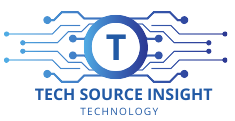Power users are individuals who push their tech to the limits. They know how to make their devices work smarter, faster, and more efficiently. Whether it’s tweaking operating systems or mastering advanced tools, power users utilize insider strategies that go beyond the surface-level functions most people use. This article explores these advanced techniques, offering practical insights to help you harness the full potential of your technology and elevate your tech game.
Optimizing Your Operating System
The operating system (OS) is the backbone of every device, and power users know how to make it run at peak performance. By disabling unnecessary startup programs, fine-tuning system settings, and ensuring updates are performed regularly, you can significantly improve speed and efficiency. Advanced OS users also leverage tools like PowerToys on Windows or Automator on macOS to create custom workflows and shortcuts, minimizing repetitive tasks.
Another crucial aspect is resource management. Using tools like Task Manager or Activity Monitor, power users monitor system usage and tweak applications or processes that consume excessive resources. For those comfortable making deeper adjustments, registry edits (on Windows) or terminal commands (on macOS) can unlock customizations most users never know exist.
Advanced File Management Strategies
Proper file organization is essential for productivity, and power users take it to the next level. Beyond simply sorting files into folders, they use advanced tools like third-party file managers (e.g., Total Commander or Directory Opus). These tools allow for split-view browsing, batch renaming, and advanced search capabilities.
Naming conventions also play a huge role. Power users often employ consistent, descriptive naming formats for easy retrieval. Some even integrate tagging systems that allow files to be segmented by category or project, ensuring everything is simple to locate. Cloud storage platforms such as Google Drive or OneDrive add another layer of effectiveness, with synchronization options allowing automatic backups and seamless access across devices.
Boosting Productivity with Automation
Power users love automation because it eliminates tedious, mundane tasks, freeing time for more valuable work. Automation tools like Zapier or IFTTT enable seamless communication between apps. For instance, you can set up a process where all email attachments automatically save to a specific cloud folder.
More advanced users rely on scripting to achieve greater flexibility. Scripts written in Python, Bash, or PowerShell allow users to automate anything from website scraping to generating comprehensive reports. Mastering tools such as AppleScript or Windows Task Scheduler takes automation to the next level, helping even the busiest user stay organized and efficient.
Mastering Keyboard Shortcuts
Keyboard shortcuts are one of the easiest ways to work smarter, not harder. By keeping your hands on the keyboard rather than reaching for a mouse, you can streamline tasks and dramatically increase your speed. Beyond common shortcuts like copy (Ctrl+C) and paste (Ctrl+V), advanced users know OS-specific commands and app-specific shortcuts.
For instance, window management shortcuts (like “Windows Key + Arrow Keys” on Windows or “Command + H” on macOS) can save precious productivity minutes. Tools like Keyboard Maestro allow you to create your own shortcuts, while apps like CheatSheet display app-specific shortcuts with a single keystroke. The key is practice—building muscle memory can turn these shortcuts into natural habits.
Harnessing the Power of the Command Line
For most casual users, the command line may appear intimidating, but for power users, it’s like having a secret weapon. Using terminal commands (macOS/Linux) or the Command Prompt/PowerShell (Windows), you can perform actions faster and more precisely. From bulk-renaming files to finding hidden system information, the possibilities are virtually endless.
More experienced users turn to command-line tools like Git, cURL, or FFmpeg for specific use cases. For example, Git allows seamless version control for coding projects, cURL facilitates the transfer of data, and FFmpeg converts multimedia formats with just a few keystrokes. Command-line proficiency might have a steep learning curve, but it is a skill that pays off by significantly improving problem-solving efficiency.
Advanced Browser Customization
Modern web browsers are highly customizable, and power users leverage this to improve productivity and streamline workflows. Extensions like uBlock Origin (ad-blocking), LastPass (password management), and Pocket (read-it-later) transform a browser into a powerful productivity tool.
Advanced users often utilize browser keyboard shortcuts and custom scripts with tools like Tampermonkey or GreaseMonkey to create highly specialized browser experiences. Adjusting browser settings—for example, limiting cache storage or enabling experimental features—provides an additional layer of speed and functionality. Some power users even switch to developer-focused browsers like Brave for enhanced control.
Securing Your Digital Life
Power users go above and beyond basic security measures like antivirus software. They rely on multi-factor authentication for every account possible, use password managers to create and store high-strength passwords, and enable encryption on sensitive files.
To safeguard private browsing, many power users opt for Virtual Private Networks (VPNs), ensuring that data is encrypted when accessing unsecured networks. Privacy-conscious individuals also use privacy-focused browsers like Tor, and advanced users monitor network traffic with tools like Wireshark to detect potential threats.
Utilizing Virtual Machines
Virtual machines (VMs) allow power users to test software, run multiple OS environments, or safely browse untrusted content without affecting their native system. Tools like VirtualBox or VMware make this process accessible, whether you’re exploring Linux distributions or testing software compatibility.
Power users often leverage VMs to test configurations in isolated environments. Configuring snapshots ensures you can revert to a clean slate if an experiment doesn’t go as planned. VMs are also great for developers, who often need multiple device settings while working on new applications.
Exploring Advanced Networking
From port forwarding to creating private networks, power users know their way around advanced networking. Routers tailored for tech enthusiasts, like Ubiquiti or ASUS AI Mesh, offer more granular control over bandwidth, connection quality, and device prioritization.
Learning network utilities like ping, traceroute, and netstat can help diagnose internet connectivity or troubleshoot speeds. Power users also frequently configure Quality of Service (QoS) settings, ensuring that essential devices or services receive optimal internet speeds.
Troubleshooting Common Tech Issues
When issues arise, power users rely on methodical approaches to troubleshoot. They research error codes, run diagnostics, and systematically eliminate potential causes. Tools like BlueScreenView for Windows can pinpoint crash issues, while macOS’s Console app tracks system logs in real-time.
Problem-solving often involves rolling back updates, booting into safe mode to isolate problems, or even performing clean installations when necessary. A strong understanding of hardware helps, too, as many tech-savvy individuals can quickly determine whether a problem is software or hardware-related.
Embracing the Power User Mindset
Becoming a tech power user doesn’t happen overnight. It’s a constant process of learning, experimenting, and fine-tuning. By adopting strategies like automation, mastering the command line, and optimizing devices, you can stay ahead of the curve and work more efficiently. Technology is all about making life easier—and as a power user, you hold the key to unlocking its full potential.




